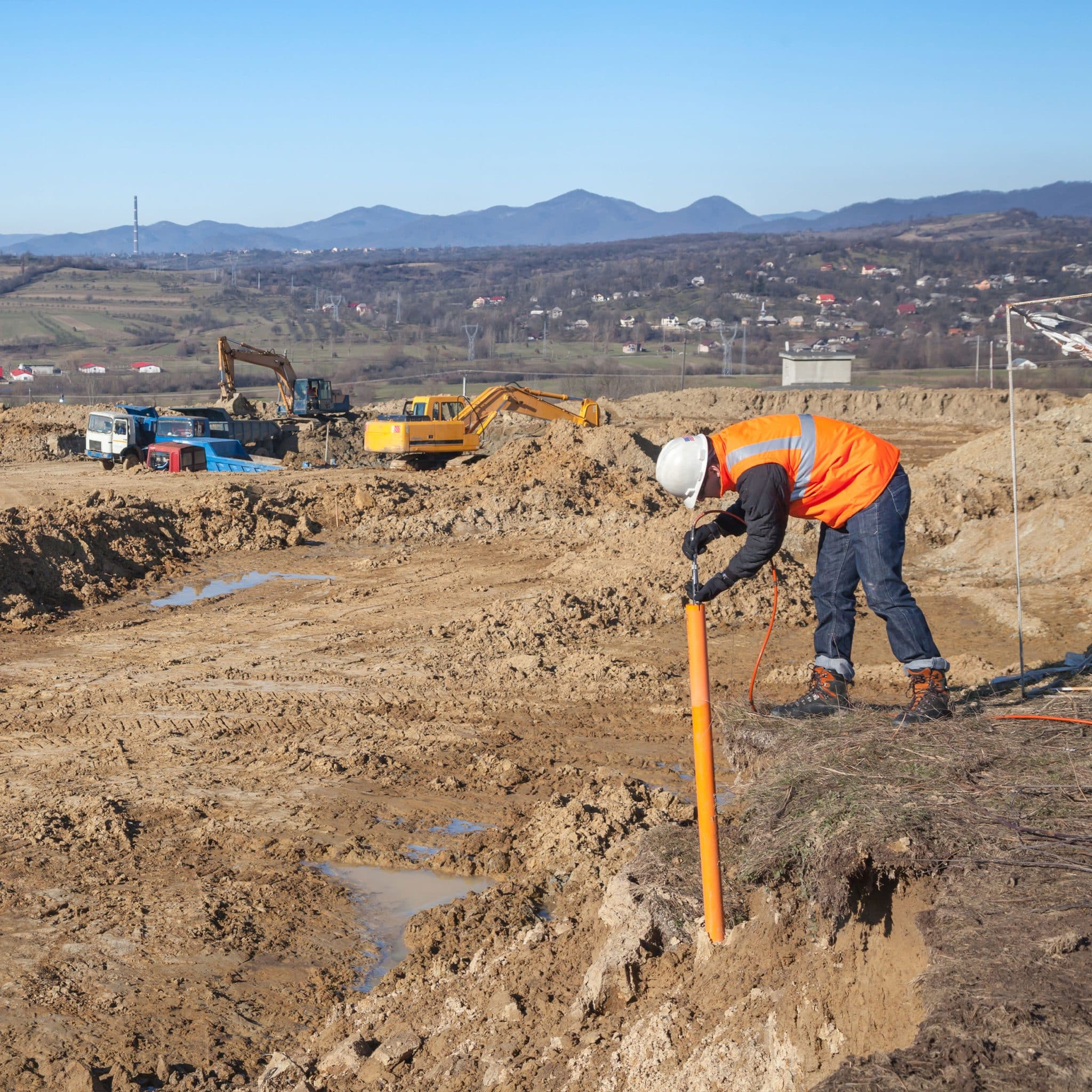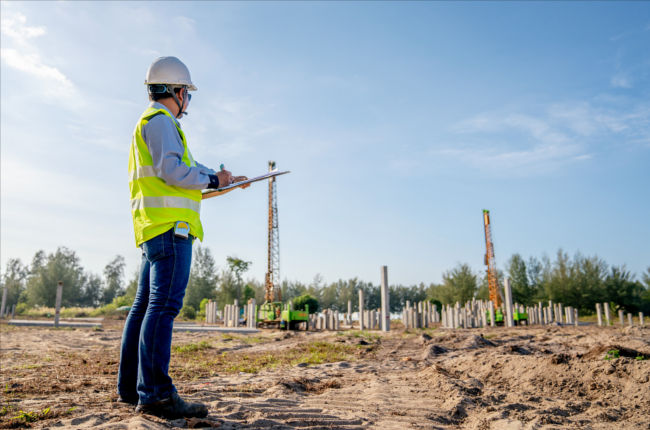Selecting the Right Geotechnical Engineers for Your Following Large-Scale Task
Selecting the Right Geotechnical Engineers for Your Following Large-Scale Task
Blog Article
The Interdisciplinary Approaches in the Geotechnical Market: Linking the Space Between Design, Geology, and Environmental Scientific Research for Ideal Project Outcomes
The combination of engineering, geology, and environmental scientific research within the geotechnical market is not merely helpful; it is essential for accomplishing ideal project outcomes. What methods might arise to promote this crucial collaboration and improve the efficacy of geotechnical methods?
Value of Interdisciplinary Partnership
The relevance of interdisciplinary cooperation in the geotechnical market can not be overemphasized. Efficient geotechnical tasks need the assimilation of diverse knowledge from different fields, consisting of design, geology, and ecological science. This cooperation guarantees that all aspects of a task are taken into consideration, bring about comprehensive solutions that address complex challenges.
When functioning in seclusion,Interdisciplinary partnership fosters advancement by allowing experts to share insights and methodologies that may not be apparent. By leveraging the toughness of multiple techniques, teams can recognize prospective threats, maximize style processes, and enhance the sustainability of geotechnical jobs. Furthermore, such cooperation promotes a holistic understanding of site-specific conditions, which is important for exact assessment and decision-making.
The complexity of geotechnical jobs necessitates a collaborated technique to analytical. When engineers, geologists, and ecological researchers interact, they can create a cohesive method that aligns technical needs with environmental considerations and regulatory compliance. This synergy not just boosts project outcomes but additionally adds to the long-lasting resilience of infrastructure. Eventually, interdisciplinary partnership is essential for progressing best practices and achieving excellence in the geotechnical market.
Key Roles of Each Discipline
Partnership amongst numerous disciplines is not simply beneficial; it is vital for the successful implementation of geotechnical projects. Each technique-- engineering, geology, and environmental scientific research-- plays an unique yet interconnected duty that contributes to predict effectiveness and sustainability.
Geotechnical engineers are mainly in charge of making foundations and ensuring structural stability. They examine dirt and rock buildings to examine load-bearing capabilities, providing crucial information for secure building practices. Their expertise makes it possible for the formulation of ingenious remedies to complex challenges.

Ecological scientists assess the potential impacts of building on communities and water sources. They conduct ecological evaluations and create reduction methods to reduce damaging effects. By incorporating eco-friendly factors to consider, they make sure conformity with laws and promote sustainability throughout the task lifecycle.
Study of Effective Integration
Effective integration of geotechnical self-controls can be exemplified with various study that highlight the effectiveness of team effort in dealing with intricate engineering difficulties. One notable example is the building of the Hong Kong-- Zhuhai-- Macau Bridge, where a collaborative technique including geotechnical engineering, geology, and environmental science was critical. Designers and rock hounds functioned in unison to examine the seabed conditions and enhance the structure design, guaranteeing security and decreasing environmental influence.
An additional impactful situation is the enhancement of incline security in the San Francisco Bay Area, where an interdisciplinary team incorporated geotechnical evaluation with environmental evaluations. By incorporating geological surveys and hydrological researches, the group successfully recognized potential landslide dangers and applied browse around this web-site efficient mitigation measures, enhancing security and sustainability.
Additionally, the redevelopment of Brownfield sites frequently calls for a multidisciplinary technique. In one instance in Chicago, collaboration among geotechnical engineers, ecological scientists, and metropolitan organizers caused the successful removal of infected dirt, allowing for the risk-free transformation of the site right into a community park. These case researches illustrate that interdisciplinary collaboration not only addresses technical challenges but likewise promotes ingenious options that profit both neighborhoods and jobs.
Challenges in Multidisciplinary Projects

Moreover, coordinating timetables and process among various teams can be problematic, especially when each technique has special job milestones and deliverables. This misalignment can result in hold-ups and enhanced costs. The difficulty of source allocation additionally impends huge; making sure that customized experience is readily available at crucial junctures calls for mindful planning and foresight.
Lastly, regulative conformity presents another substantial obstacle. Each self-control useful source may deal with various regulative structures, and aligning these needs to meet job purposes can be taxing and complex. Attending to these challenges necessitates strong leadership and efficient interaction methods to cultivate collaboration and ensure that multidisciplinary teams work cohesively in the direction of shared goals.
Future Trends in Geotechnical Practices
As the geotechnical industry develops, arising patterns are reshaping methods to attend to the difficulties dealt with in multidisciplinary tasks - geo tech engineer. One considerable pattern is the boosted assimilation of innovative modern technologies, such as expert system view it now and equipment understanding, right into geotechnical evaluation and design. These modern technologies boost predictive modeling and danger analysis, making it possible for designers to make more informed decisions throughout the project lifecycle

Furthermore, the adoption of electronic doubles and real-time tracking systems is ending up being extra widespread. These devices promote ongoing analysis of dirt conditions and architectural efficiency, enabling prompt interventions when issues arise.
Verdict
In conclusion, the combination of design, geology, and ecological scientific research is vital for accomplishing optimal end results in the geotechnical sector. Successful instance studies show the benefits of this method, while recognizing the obstacles dealt with in multidisciplinary projects.
The integration of engineering, geology, and ecological scientific research within the geotechnical sector is not simply beneficial; it is essential for attaining optimal task end results. Effective geotechnical tasks need the assimilation of diverse competence from numerous fields, consisting of engineering, geology, and ecological scientific research.Navigating the complexities of multidisciplinary projects in the geotechnical market provides a number of considerable obstacles.As the geotechnical market evolves, emerging fads are reshaping practices to attend to the obstacles encountered in multidisciplinary projects. Geotechnical engineers are increasingly teaming up with environmental researchers to make sure that jobs straighten with sustainability objectives and conform with regulatory demands.
Report this page